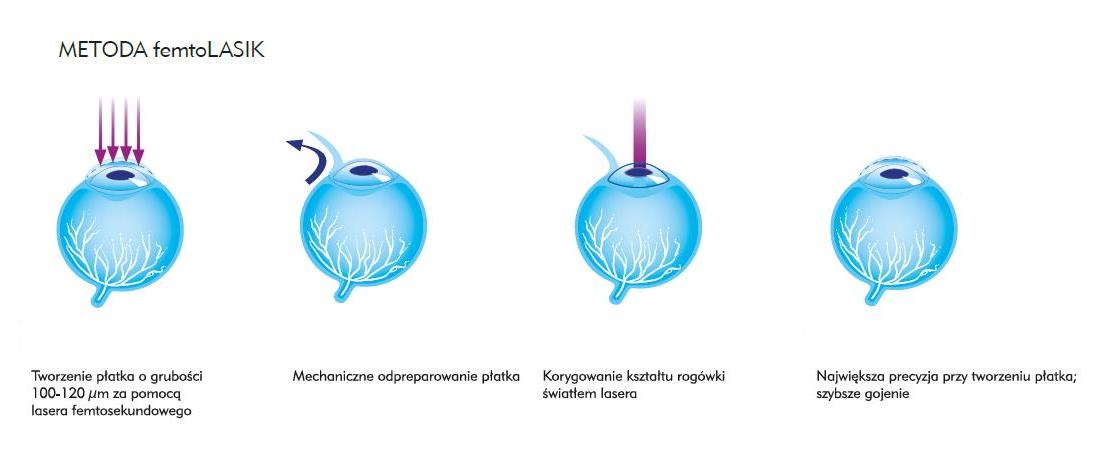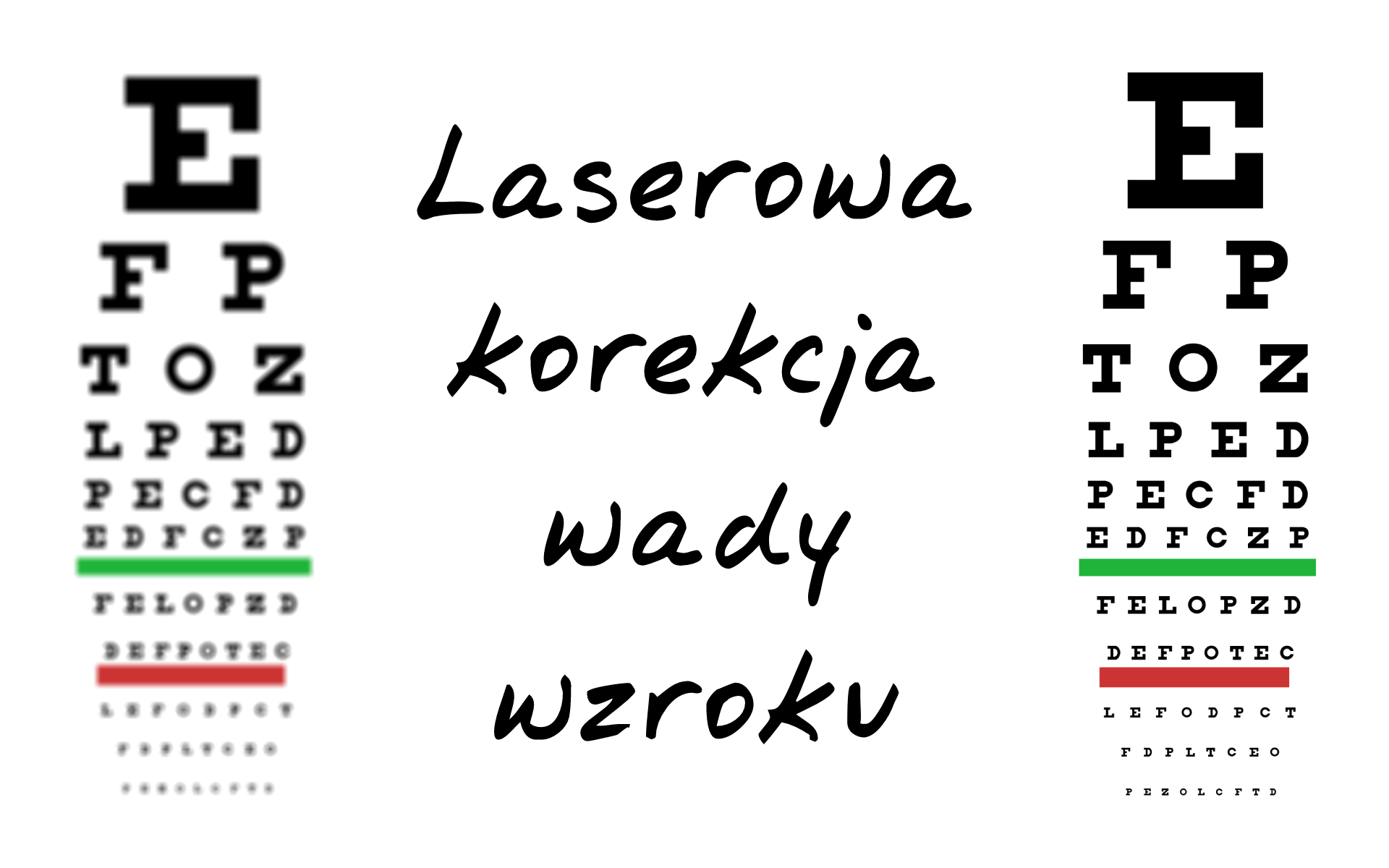🇵🇱 Przejdź do polskiej wersji tego wpisu / Go to polish version of this post
From the age of 7 until almost 31, I looked like this 🤓. However, since March 17, 2023, I no longer look like that because I decided to undergo laser correction surgery for my nearsightedness. Just to clarify, because I know some people get confused, nearsightedness means poor vision on longer distances, and that’s stretching the word because with my prescription, which is around -4 in both eyes (I’m speaking cumulatively because I also had astigmatism and it varied), I couldn’t see sharply from a distance of half a meter, so there was no question of using a computer without glasses. After so many years, I had already gotten used to wearing glasses to the point where they were not overly burdensome for me. Glasses became a part of me to such an extent that I think most of my friends have never seen me without them. However, having glasses on your nose can be quite inconvenient in some situations, so I decided to undergo surgery. I chose the FemtoLASIK method, and in this post, I will describe how the whole process looked from my perspective. I hope that this type of story will be useful to someone who is considering making laser correction.
Qualification
After a preliminary market research, I chose one of the eye clinics in Lublin. I won’t mention its name here because I don’t want to advertise it. However, if someone is interested in obtaining this information from me, I invite them to contact me by email or any other available way.
The process begins with scheduling a free screening examination, which involves a preliminary assessment of our vision. If everything is fine and there are no fundamental contraindications for the surgery, we can schedule a final qualification, which aims to further exclude any contraindications and determine the appropriate method for our specific case. This qualification cost me 300 PLN (~$70) and lasted about 5 hours (in my case it was between 9:00 AM and 2:00 PM). It is advisable to take at least two days off, on the day of the qualification and the day after, as during the process drops with, in my opinion, a high concentration of atropine are used, which dilated my pupils for as long as 30 hours. During this time, I experienced photophobia and poor close-up vision, both with and without glasses, so I recommend taking this time off. I managed to schedule it on Thursday and taking Friday off, I had the whole weekend to regain normal vision. The qualification process is interesting because I was never tested with so many different machines. I didn’t even know that so many eye testing machines exist. Some examined the bottom of the eye, others checked the thickness of the cornea, and more of them checked how the pupils reacted to changes in lighting.
After all the tests, we have a conversation with the doctor, who evaluates the state of our vision, determines whether we qualify for the surgery, defines which methods are appropriate for us, and briefly explains what it is all about, to obtain all the necessary information to make a decision whether to undergo the surgery, and which technique to choose.
I was presented with two methods, and I chose FemtoLASIK. I scheduled the surgery, paid a 2,000 PLN (~$475) deposit, and waited for the day.
Preparations
After deciding to undergo surgery, you receive a set of brochures informing you about how to prepare for it, walkthrough the procedure, and what the contract that needs to be signed looks like.
For the surgery, I had to bring:
- a tracksuit,
- flip flops,
- polarized glasses (with UV filter) – they gave me a pair, but they weren’t fitted, so it’s always better to have your own. Good quality glasses cost around 300-350 PLN (~$70-80),
- ID card,
- money to cover the remaining cost of the surgery.
In my case, the total cost of the operation was 9200 PLN (~$2200), out of which I had already paid 2300 PLN (~$545) earlier for the qualification fee (300) and the deposit (2000).
Additionally, some interesting facts:
- You cannot drink anything for 2 hours before the operation,
- 24 hours before the operation, it is not recommended to use perfume, antiperspirant, and/or deodorant,
- 48 hours before the operation, it is not recommended to drink alcohol, coffee, and energy drinks to avoid increasing pressure in the eye.
Procedure
I was instructed to arrive at the clinic at 8:45 AM. After settling the payment and a short wait in the waiting room, I was invited to the changing room, where I dressed in a tracksuit, slippers, and a hospital cap, as well as shoe protectors that I was given. First, my pulse and blood pressure were checked. I thought I wasn’t too nervous, but my blood pressure was slightly elevated. I was given a pill to lower it, and a catheter was installed as a precaution in case anything happened, but it wasn’t used in the end. I understand this because it’s easier to insert a syringe into a catheter in case something goes wrong than to look for a vein in a patient who is in distress. Then the anesthetic drops were started. I thought it would only be done once, but it turned out that I had them inserted 7-8 times over the course of several tens of minutes, each time 5-10 drops. I noticed that both in the operating room and in the pre-operative areas, the temperature was about 19 degrees Celsius. I saw it on the wall thermostat. It’s quite cold, so I wonder if it’s deliberate or just a preference of the staff. It’s possible that the lasers have to work in such conditions, as I think I once read something about it.

Upon entering the operating room, the procedure begins with the use of a laser, which is tasked with making a cut in the outer layer of the cornea and creating a flap that, when lifted, exposes the inner part of the cornea. The eyelids are held open with special forceps, and the laser is equipped with something like a suction cup that attaches to the eye to prevent it from moving. The process is quick and is done first on one eye and then immediately on the other.
After completing the first laser work, the patient is moved to the other side of the table for the second part of the procedure. This is less pleasant, as at this stage, surgical lifting of the previously cut flap is performed. The flap appears to consist of more than one layer, and the entire process, from my perspective, looked like the surgeon was opening my eye like a book, page by page. Once the eye is opened, the laser does its work, and the eye is closed again. The way the eye is closed reminded me of squeegeeing water off a window with a rubber tool. The surgeon used a lot of liquid and ran the tool over the eye until the surface was evened out. The process is repeated on the other eye.
That’s all. The whole thing takes about 20 minutes. The patient gets up from the operating table and, escorted by a nurse, returns to the pre-operative area. At this point, I could see much better than without glasses, even though the vision is still hazy, similar to the effect of swimming without goggles in a pool with a lot of chlorine. The eyes are irritated, but the anesthesia is still working, so it is tolerable.
After the surgery
After about 30 minutes of waiting, the doctor comes and performs an examination, checking if everything is okay. During this time, the nurse provides sunglasses with a filter (polarization), a set of documents with recommendations, drops with antibiotics, drops as artificial tears, and painkillers. After everything, you can leave the clinic, but under the supervision of an adult. The entire process from entering to leaving the clinic took about 3 hours in my case.
The first 4-6 hours after returning home were a tragedy for me. My eyes were burning and tearing like crazy. They were a mess when closed, and I couldn’t keep them open for more than a second. Finally, the painkillers started to work, and I managed to fall asleep. By the evening of the same day, it was bearable, although close-range visibility was very weak. Focusing on anything within the room was almost painful. The problem completely stopped after 7 days from the surgery. After those seven days, the only drawbacks I noticed were temporary difficulties in focusing on small distances, quick eye fatigue and dryness, and mild light sensitivity. After two weeks, everything was pretty good. The only side effects I still felt were dry eyes, especially troublesome after waking up in the morning, and easy eye fatigue, which affected rather weak evening vision.
The treatment after the surgery consists of instilling Tobradex drops every hour a day after the procedure, then 4 drops daily in the 1st week, 3 drops daily in the following week, and so on until discontinuation after 4 weeks. These drops are probably a steroid with anti-inflammatory effects. In addition, Artelac drops are used for 6 months after the procedure in case of dryness in the eyes.
Of course, the adventure doesn’t end there because there are still follow-up visits. I had my first one 3 days after the surgery. The examination showed that I read 120% of the norm with my right eye, and a bit worse with my left, as it was at 90%. However, I had significantly more problems with my left eye, which hurt more, so I assume that the healing process was slightly worse in that case. I have my next visit scheduled for three weeks after the surgery, and at the time of writing this post, it has not yet taken place. These two visits are free (included in the cost of the surgery), but the next ones will probably be normally paid, although I don’t know how much yet.
Summary and final impressions
During the surgery, I had a moment when I thought, What have I done… Similarly, the first few hours were quite difficult for me and raised some doubts about the validity of my decision. However, now looking back, I am very pleased with the result and would definitely do it all over again. The increase in quality of life is indescribable, and I say this while not all of the side effects have subsided yet. Therefore, it is a formality to say that I can recommend such a correction to anyone who wears glasses with a clear conscience. If anyone has any questions related to this, I encourage you to leave a comment or contact me directly.







Pingback: Zrobiłem sobie laserową korekcję wzroku – Tomasz Dunia Blog